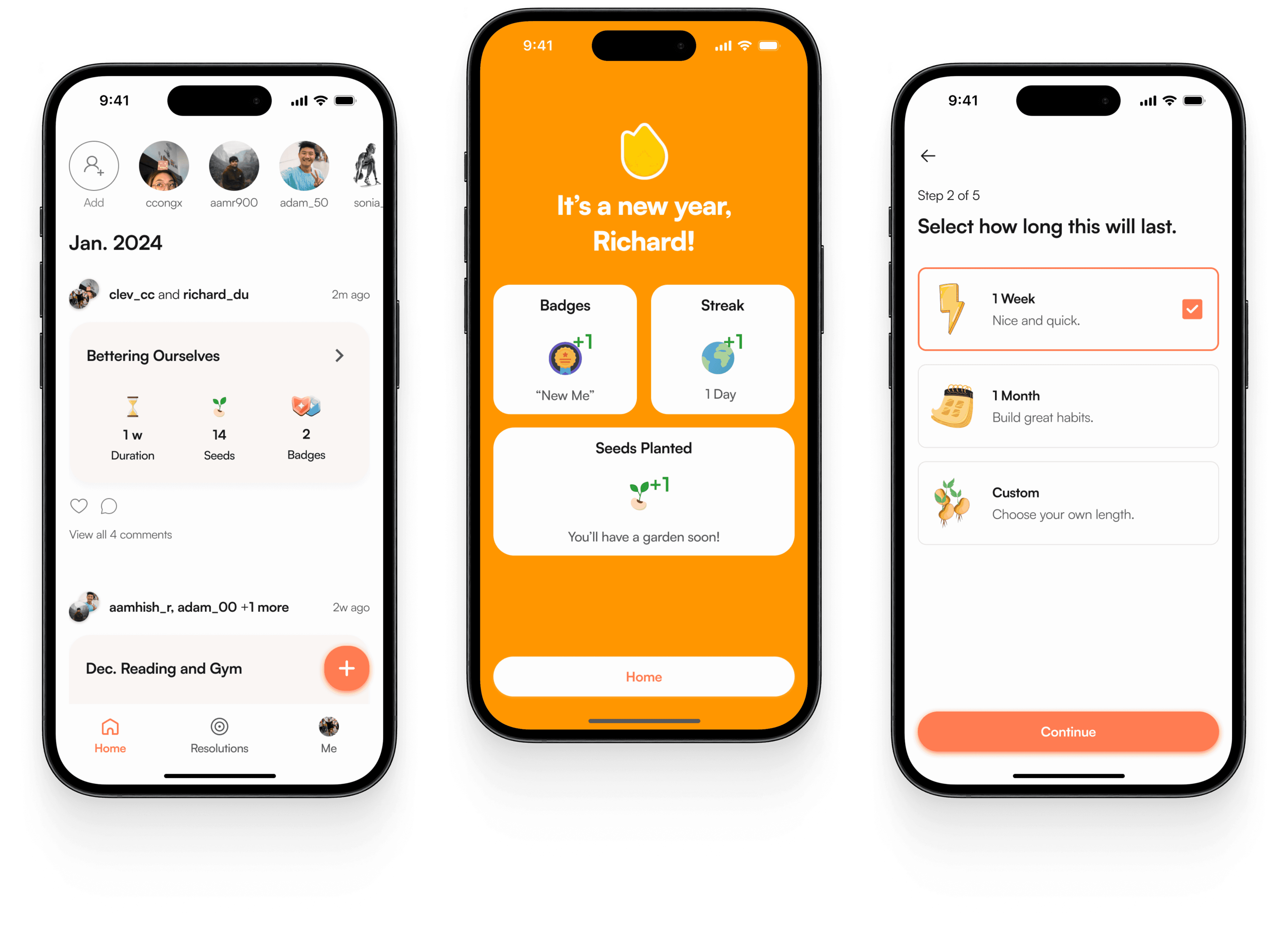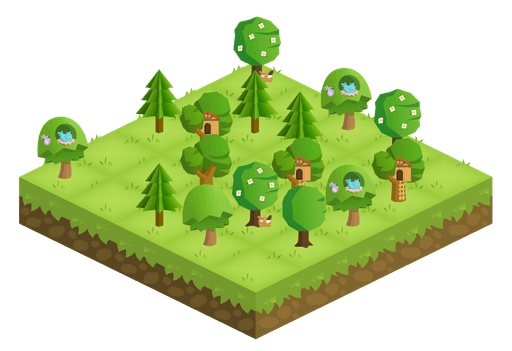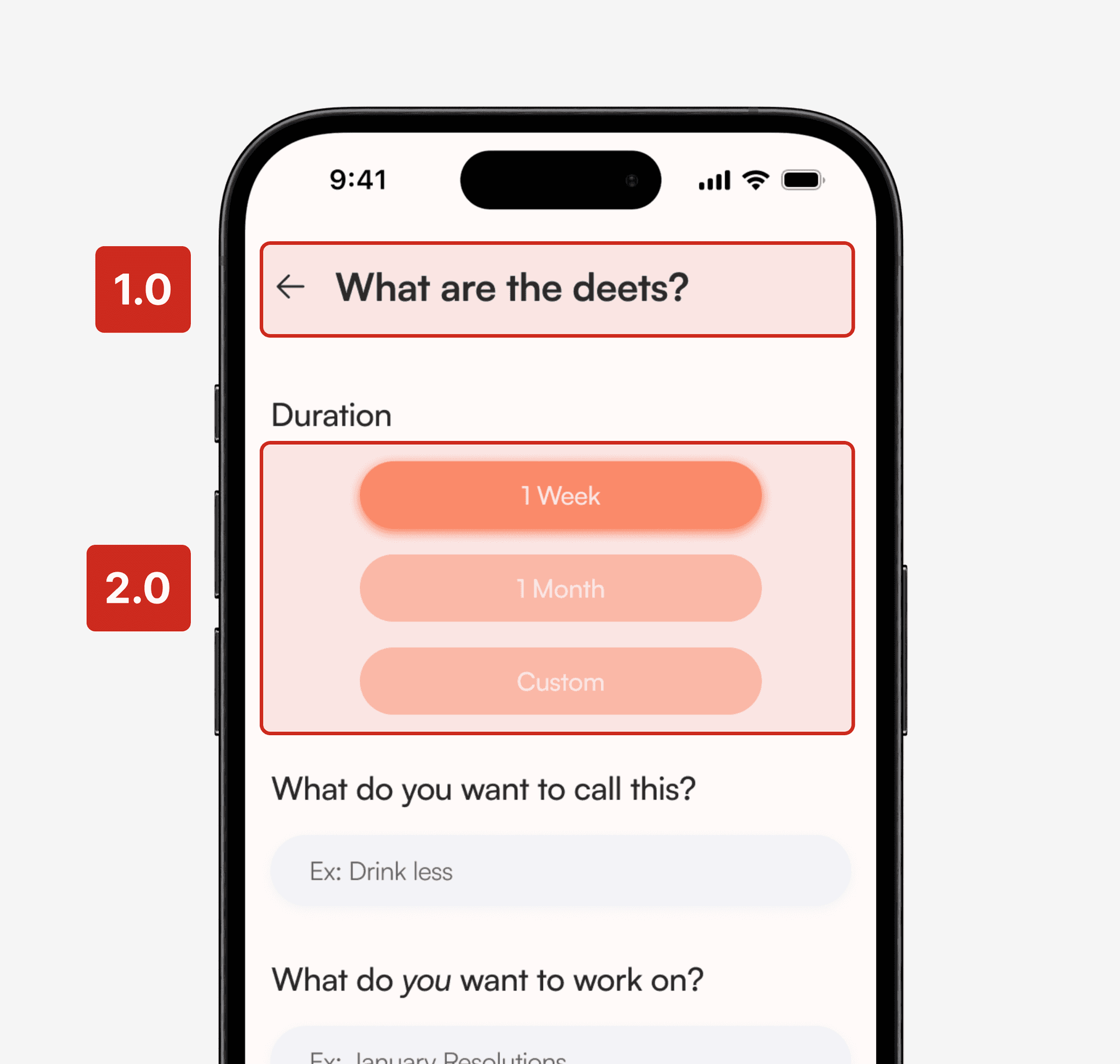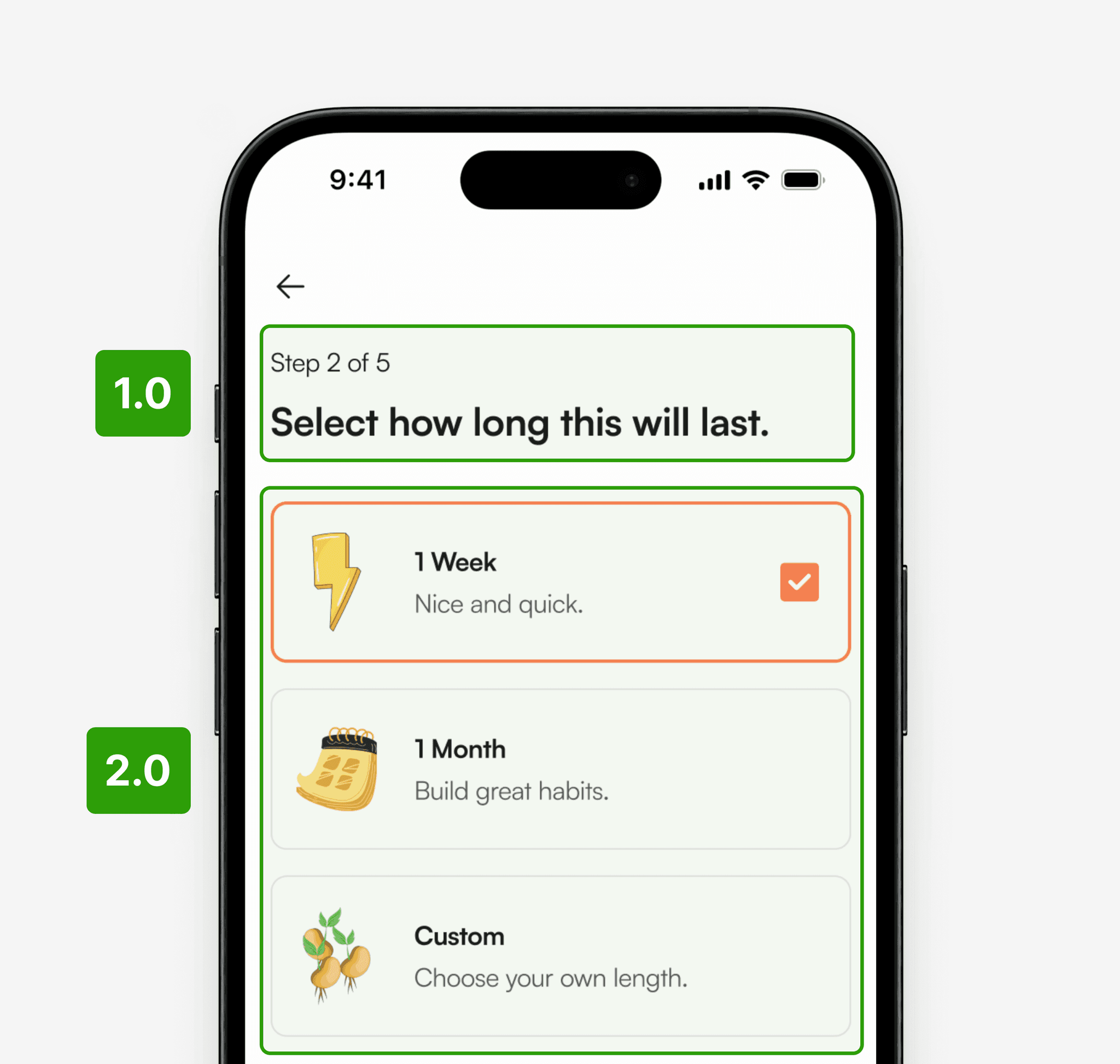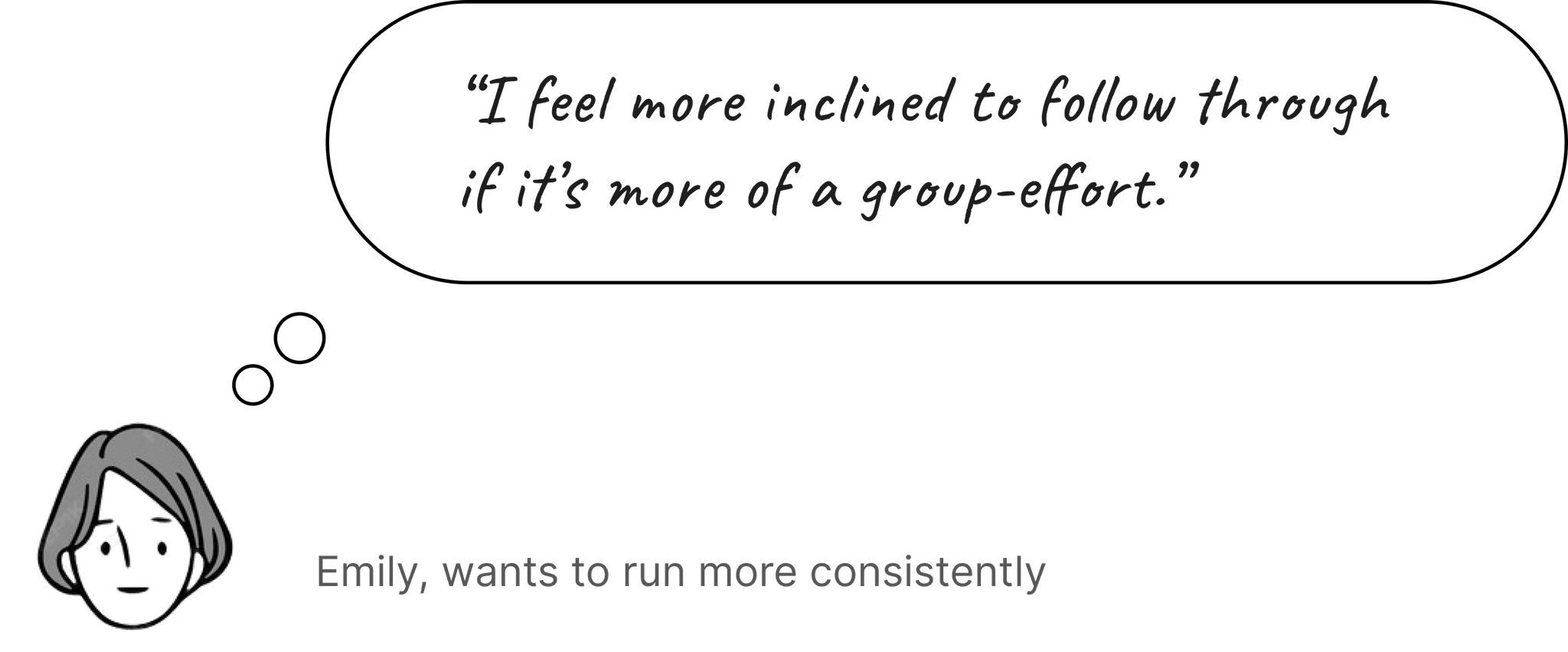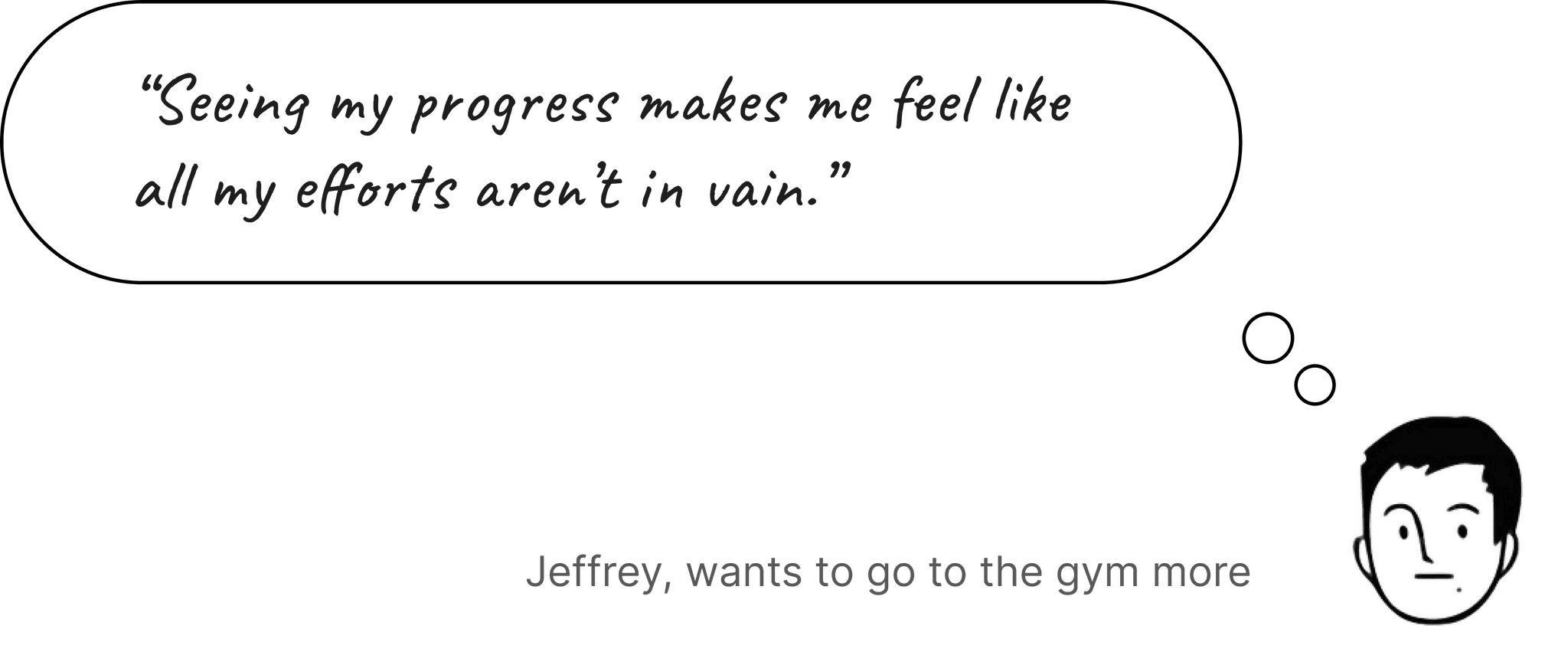Increasing task completion rate by 25% for a self-growth app
Seeds
YEAR
2024
TIMELINE
6 months
TOOLS
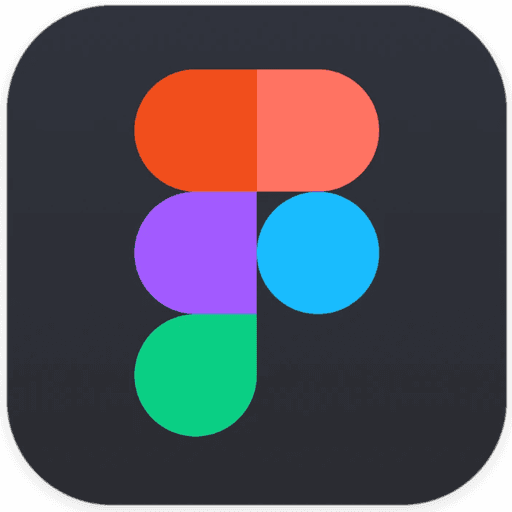
Figma
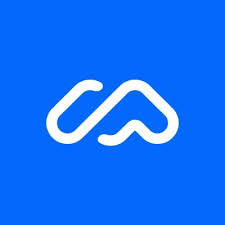
Maze
PLATFORM
iOS
INDUSTRY
Productivity
TEAM
1 Designer, 2 Engineers
Seeds marries our New Year Resolutions with consistency
"Seeds" started out as a hackathon project before becoming a personal project I'd continue to polish. I wanted to examine why our vows for change often fall through, and how design could mitigate this problem. In this product, users reframe their solo resolutions into group efforts and record completion. With design, I improved the task completion rate for this from 70% to 95%. This is important because it would enable for users to more seamlessly create and record completions of their resolutions with their friends, leading to a higher adherence.
With more time, I would've also focused on growth and retention metrics (MAU, CRR, etc.) to better understand the typical user lifecycle and inform future design choices accordingly.
VIDEO
Users can create a group-effort to complete their resolutions together.
IMG
Home screen, resolution-recording success screen, creation flow
THE PROBLEM
Effort for sticking with New Year's Resolutions falls off a cliff.
Quantifying the problem
This data was collected via academic and other secondary sources, hover statistics to learn more.
Why do so few people actually succeed?
Where do people feel friction early-on? What are the common pain points?
We hypothesized why this happens
The team and I shared our experiences, as well as those of our peers. From going to the gym more often to eating healthier, there was a consistent theme for why sticking with resolutions is difficult:
This prompted the north star question:
How might we make following our resolutions more engaging and less lonely?
RESEARCH: THE "HOOKED" MODEL
There are four parts to habit-forming products.
Core pillars
I was solving a people-problem at its core. As a result, I leveraged habit-forming book, "Indistractable" by Nir Eyal to add scientific merit to my design decisions.
Trigger
Stimuli that spur us to do something. This can be in the form of social, in-app or more.
Action
What drives users to engage while satisfying the trigger. The design should enable the action needed to be taken to be as simple as possible.
Reward
What aids in helping the user stick to using the product. How might we create intrigue within the product?
Investment
User time and effort, also known as "stored value". The investment implies a return for the user next time around, whether it's inviting friends, building virtual assets or more.
So… what's the competition doing?
I looked at competitors in the self-growth space: Not so Boring Habits (Apple Design Award '22 Winner) and Duolingo (37m+ MAU) to identify areas that contributed to user and business success. My core insight was that these apps mix gamification and relaxed visual design to encourage users to return.
IDEATION AND PRIORITIZING
I prioritized: feasibility, user-satisfaction and time.
Finding the sweet spot
The criteria for narrowing down which ideas to proceed with was determined by the time constraint that engineering and I faced. We had to aim for something that wasn't too ambitious, but still create value for users. As a result, we formed two potential ideas.
Idea 1: Live Accountability Sessions
Engineer Effort
User Impact
Timeline
Rationale
Live-accountability calls weren't very practical. Differing resolutions call for different settings to be completed in.
Idea 2: Add Friends for Group Gamification (Winner!)
Engineer Effort
User Impact
Timeline
Rationale
Group Gamification best adheres to the hooked model, while also being more technically feasible than the other proposed ideas.
Tying it all back together
Setting up Effective Triggers
A social feed with other friends serves as an internal trigger to stay up-to-date with what others are doing. Internal triggers are the root cause of forming habits.
Making Actions Low-Friction
The action of creating a challenge/resolution is low-friction, along with recording its completion. A trigger or prompt would help to promote this as well.
Rewarding Users
Self: Intrinsic rewards and signs of encouragement are rewards for ourselves.
External: Others reacting to completed resolutions satisfies social desire (likes, comments, approval)
Expanding on User Investment
Planted seeds could be expanded upon to add another layer to the gamification aspect.
USER TESTING
What would end-users think?
Gauging success
I tested the product with 15 end-users (people who've previously set resolutions). The task that end-users were given was to create a group resolution by inviting friends before recording daily completion.
The key metric I was evaluating was task completion rate. I chose this metric because completing a resolution would be the heartbeat of the product, and I wanted to gauge how seamless this was. With more time, I would've liked to also focus on growth and retention (MAU, CRR, etc.)
Hearing from end-users
I was solving for a people-problem. How inclined would users feel to continue with their resolutions after use?
70% of users completed the task
Most users were able to create a group resolution, send out invites and record daily completion of the task.
CHALLENGE: DESIGN PUSHBACK
How might we further illustrate progress?
We faced a challenge.
To drive home the reward and investment parts of the Hooked model, I wanted to create a garden of progress for users could see their seeds being grown. I theorized that this would improve user engagement through delight. However, this idea faced pushback from engineering, as it wouldn't be feasible to develop given the time constraint.
Speaking the same language as engineering was key; we mutually pivoted to prioritize insights from testing. We wanted to have something more tangible to test, rather than focusing on a "What if?" idea.
Clarifying the resolution creation steps
To improve usability, I leveraged feedback to iterate on the resolution creation flow. This improved the solution by clarifying to users how the product works and where they were in the process of creating a group resolution.
V1 — Creation Details.
1.0
User Confusion
It wasn't clear to users where exactly they were in the flow. Because of this, it led a few testers to drop-off from the task before successfully completing it.
2.0
Confusing button styling
The selection buttons were the same style as the CTA button. This contributed to poor visual hierarchy.
V2 — Improved Creation Heuristics.
1.0
Step Clarity
I decided to progressively disclose information needed on the user end to prevent drop-off, while adding a progress indicator to improve the affordance.
2.0
Clear selection options
Much clearer visually with distinguished button styling, along with a simpler type-hierarchy that feels more systematic.
Polishing up visual design elements
The end product was more visually refined, with iterations having been made to the home screen, resolution-creation flow and completion screens.
MEASURING IMPACT
Our resolutions—done together.
What did people think?
We initially set out to solve a "people" problem, so I wanted to also gauge how well this product might be received by end-users. I wanted to supplement quantitative data with qualitative to build out more informed future iterations.
Assemble your squad
Impact
+25%
Task Completion Rate
User Satisfaction
VIDEO
Building a group-effort.
VIDEO
Recording completion of a resolution.
TAKEAWAYS
Great products have no room for siloed work
Find common ground early.
There was opportunity to capitalize on the interaction aspect of the project, but it was met with pushback from my team. As a designer, understand the context of my teammates and speak the same product language.
There's a time and place for "What if?" ideas.
While data is important, so is considering the impact that small, gradual improvements can bring to the UX. There is a time and place to push for more, and knowing when's the right time is a skill.
If I had more time…
I would've liked to also focus on growth and retention metrics (MAU, CRR, etc.) to better understand the typical user lifecycle and inform future design choices accordingly.


